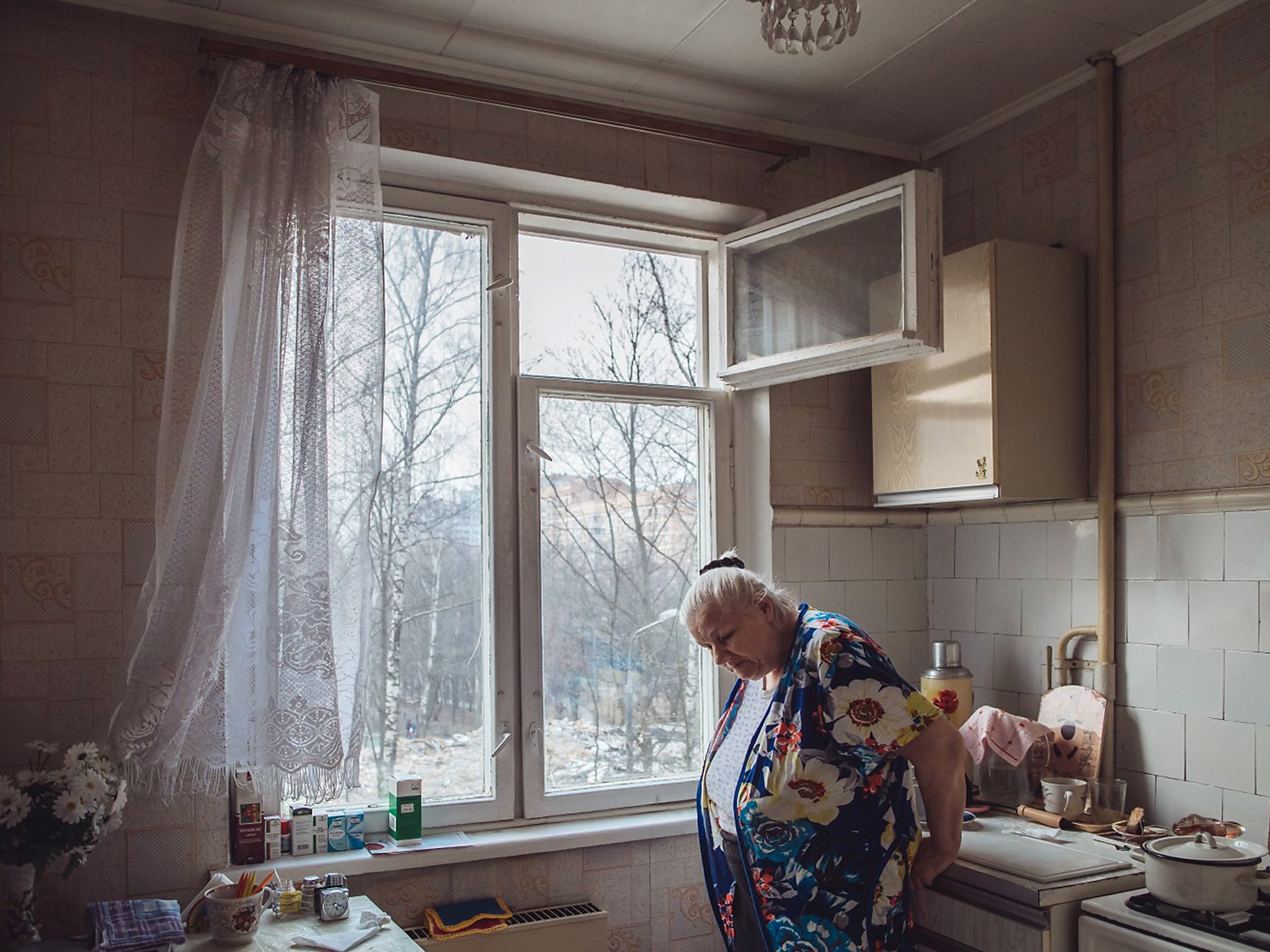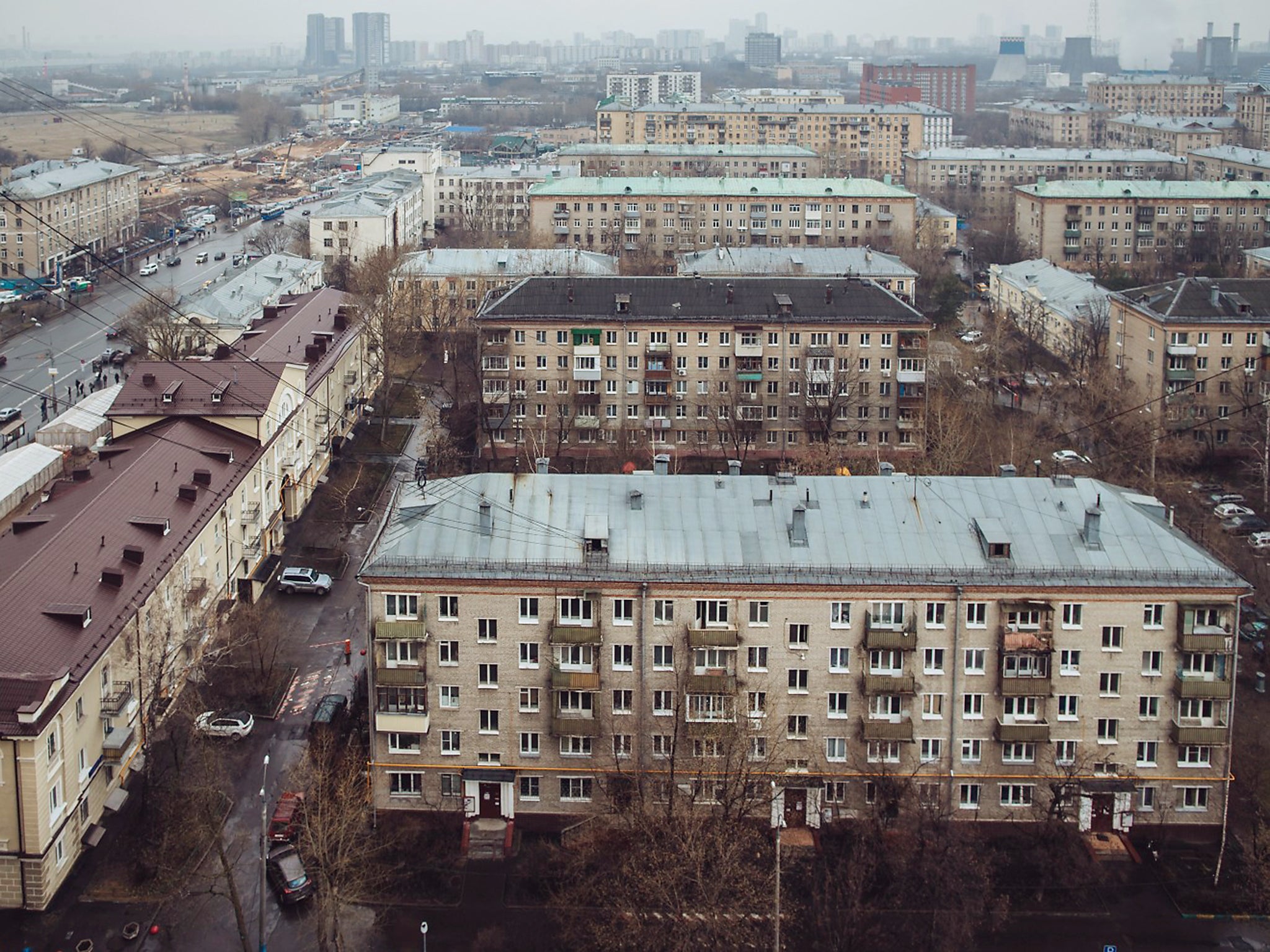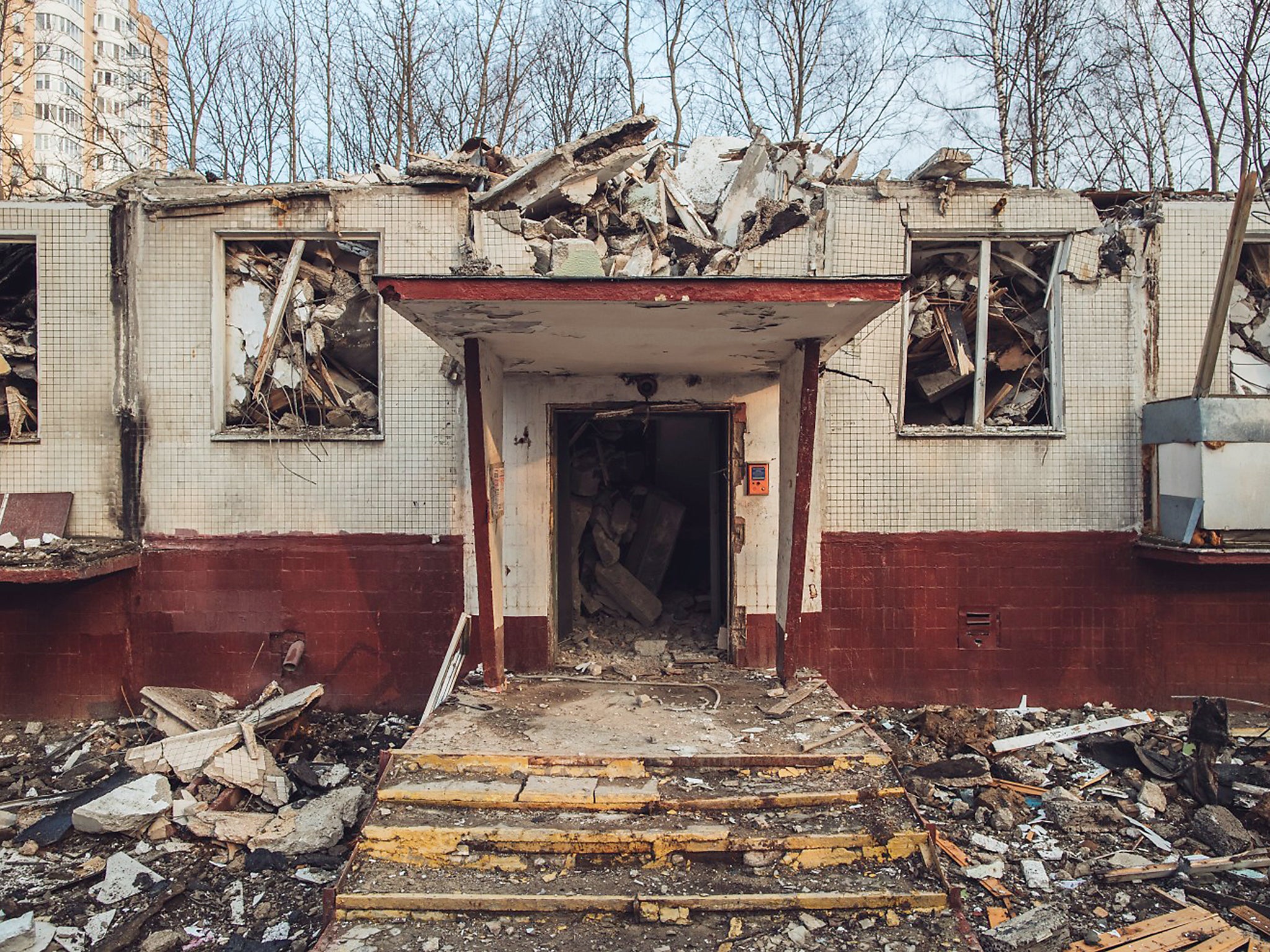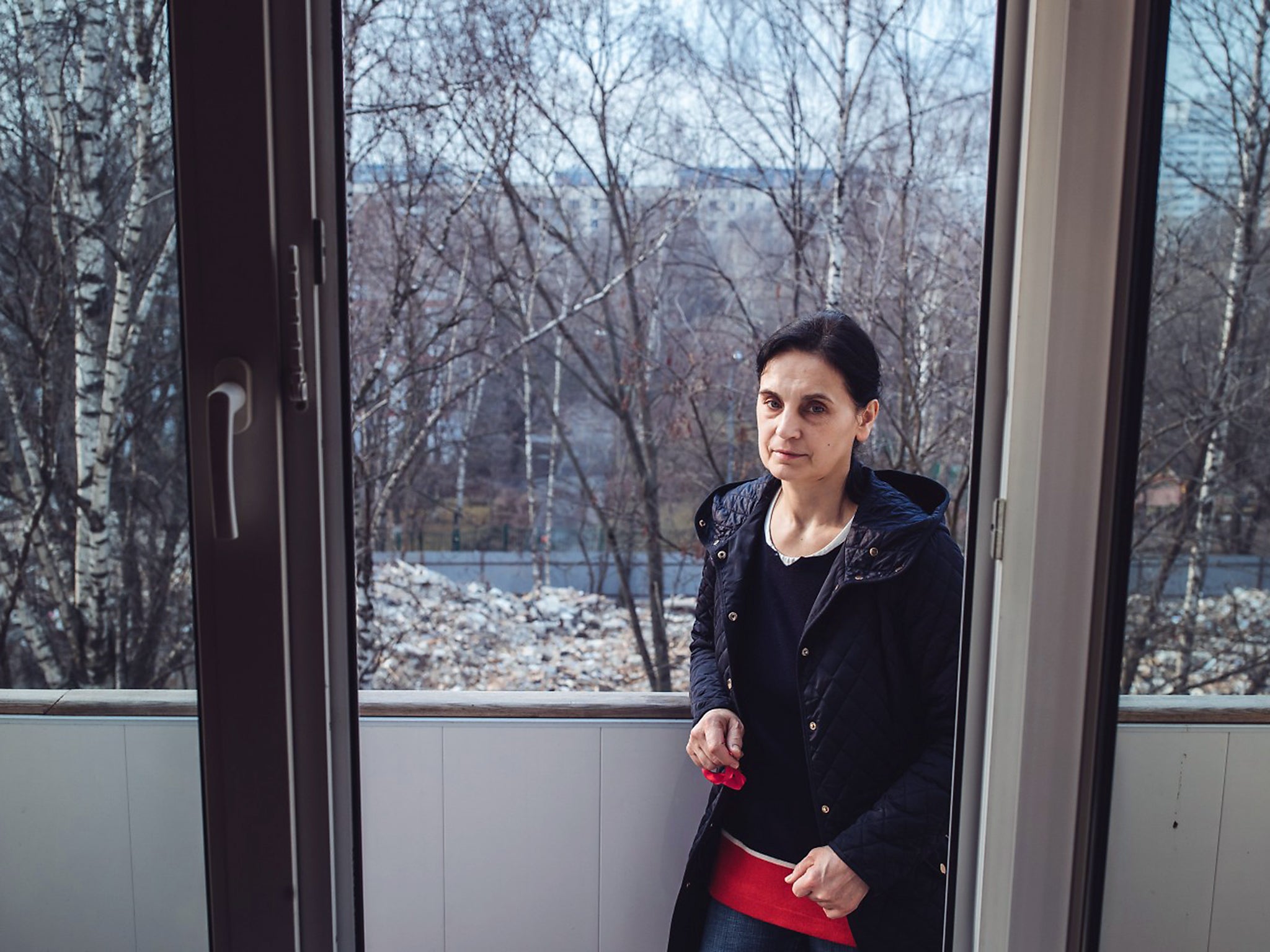The residents refusing to give up their post-war homes in Moscow
Russia’s prefabricated homes of the 1960s were never perfect, but they gave hope to millions moving from the countryside to the city for the first time

Your support helps us to tell the story
From reproductive rights to climate change to Big Tech, The Independent is on the ground when the story is developing. Whether it's investigating the financials of Elon Musk's pro-Trump PAC or producing our latest documentary, 'The A Word', which shines a light on the American women fighting for reproductive rights, we know how important it is to parse out the facts from the messaging.
At such a critical moment in US history, we need reporters on the ground. Your donation allows us to keep sending journalists to speak to both sides of the story.
The Independent is trusted by Americans across the entire political spectrum. And unlike many other quality news outlets, we choose not to lock Americans out of our reporting and analysis with paywalls. We believe quality journalism should be available to everyone, paid for by those who can afford it.
Your support makes all the difference.The Soviets built Margarita Smurova’s five-story apartment building – and tens of thousands more like it – with an expiration date that’s long since passed.
She thinks the building is still in fine shape and could last a few more years, but Moscow has different plans.
Look out her window and you’ll see what those are: two identical apartment houses razed, a mountain of debris left scattered as if in the wake of a hurricane or bomb blast.
Nearly all of Smurova’s neighbours have left, but she’s holding out, unsatisfied with the replacement apartment offered to her by the government (her mother is in a wheelchair), and is battling the city in court. Meanwhile, the gas to the building has been cut. Thieves are looting the vacant apartments.
“I really think the city is trying to kill its own people, evicting them like this,” she says, walking up the stairs into an abandoned fifth-floor apartment with a balcony overlooking the wreckage.
For Smurova’s parents, who moved into this building from a communal apartment in 1965, it was a chance for a new life with privacy at home and green public spaces outside. Today, the “Khrushchevka”, named after the former Soviet leader who ordered its earliest design, is better known by Russians as a symbol of ageing Soviet-era infrastructure.
“I love my five-story house; it’s practically a pathology,” jokes Tatyana Chaynikova, 68, Smurova’s neighbour, the busybody of the condemned apartment block. “After my husband died, I put everything I had into this apartment. And now that they’re moving me out, what will I have left?”

In 1954, the Soviet Union under Nikita Khrushchev began what may have been the largest urban development project in history. Facing a severe housing shortage and a booming post-war population, the communist leader commissioned a prefabricated apartment house that would transform the country. By the time he was ousted from power in 1964, as many as 54 million Soviet citizens – a quarter of the population – had moved into new apartments, a number that would grow to more than 127 million in the five years that followed. In 1961, for the first time, the Soviet Union’s urban population surpassed its rural population.
Cutting-edge for their time because they were quick and cheap to build, but also because of the effort to include green space around them, the apartments were not known for their aesthetic appeal. Some early versions were built with cheaper materials meant to last only 25 years, or until the Soviet Union had successfully built communism and would replace them with something better.
“We are not against beauty; we are against superfluity,” Khrushchev said, ordering state architects to try to make them as pleasing as possible, given their limits.
Now, in Moscow, their time is up. Mayor Sergey Sobyanin in February announced what may be history’s largest urban demolition project, eliminating nearly 8,000 buildings, mostly five-story building stock including structures built under Khrushchev, in a resettlement project that will ultimately transplant 1.6 million people.
Smurova’s apartment building, which has just been slated for demolition under a project approved in 1999, shows how messy those disputes over housing can become in Russia.

The project is part of a sweeping, although contentious, change for many Muscovites, whose city is growing wealthier even as it is run by an administration that rarely seeks public consensus before launching large beautification projects such as parks and road works.
Critics say it’s a handout to Russian property developers.
“I know the mood and expectations of Muscovites,” Russian President Vladimir Putin told Sobyanin during a televised meeting in February, giving the green light to the project. “They expect these buildings to be torn down and new housing to be built in their place.”
Some are happily bidding farewell to ageing apartments, known for their low ceilings, thin walls and faulty plumbing.
But Khrushchevki were a major step forward for urban planning, says Kuba Snopek, a Polish architect who did research in Russia and wrote a book called Belyayevo Forever about the importance of self-contained, mid-century Soviet housing developments called “mikrorayony”, or microdistricts, which regulated urban expansion by ensuring access to green spaces, public transportation and municipal buildings.
“It’s very easy to communicate the flaws of this architecture,” says Snopek, who sought to have Belyayevo, a region of Moscow, put on the Unesco World Heritage List. “It’s vulnerable because it is ugly and doesn’t look precious. But it’s hard to communicate its values because they’re invisible.”
When they first appeared, the apartment buildings were hailed as a revelation. In the 1962 musical film Cheryomushki, based on an operetta by Dmitri Shostakovich, a young couple literally sings the praises of the new apartments. “The whole apartment is ours, ours. The kitchen is also ours, ours. The windows are ours, the doors are ours. I can’t believe my eyes,” they sing.
But Russian attitudes toward the prefab housing grew darker in later years, particularly as the apartment buildings grew larger and the infrastructure decrepit. In the 1988 movie Autumn, Chertanovo, about a Moscow microdistrict that served as a testing ground for experimental architecture, fatalistic graffiti daubed on a wall during the film reads: “I was born here, I will die in Chertanovo.”

Nowadays, these Soviet buildings have become shorthand for working-class neighbourhoods. The 2012 miniseries Princess from a Khrushchevka is a fish-out-of-water story about a young woman from the outskirts of Moscow who lives with her father, a plumber, and finds a job as a housekeeper for a wealthy magazine editor.
But love them or hate them, residents worry about getting decent new apartments if their old ones are torn down. Some are organising for a legal and political battle.
“We owners are not going to just give away our apartments for what they give us,” says Kari Guggenberger, an IT developer who also runs a Facebook group called Muscovites Against The Demolition.
“In two months, there are going to be lists of houses to be torn down. So in two months, there’s going to be a storm.”
© The Washington Post
Join our commenting forum
Join thought-provoking conversations, follow other Independent readers and see their replies
Comments